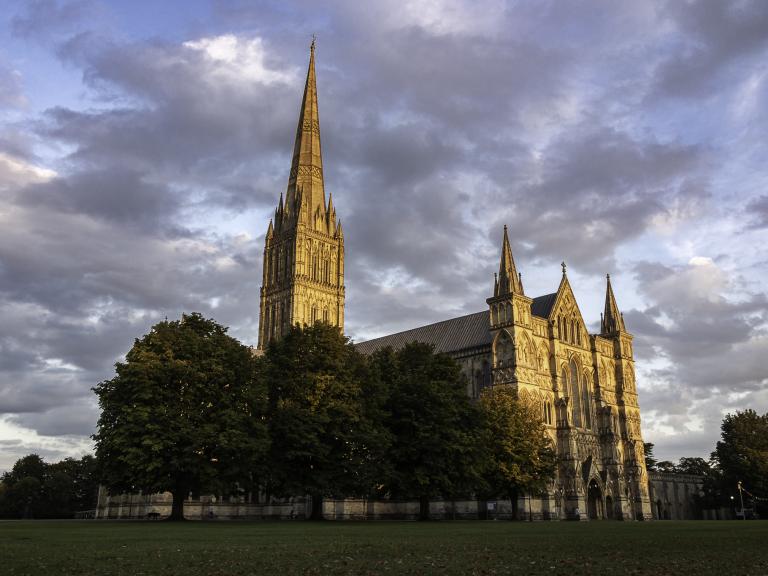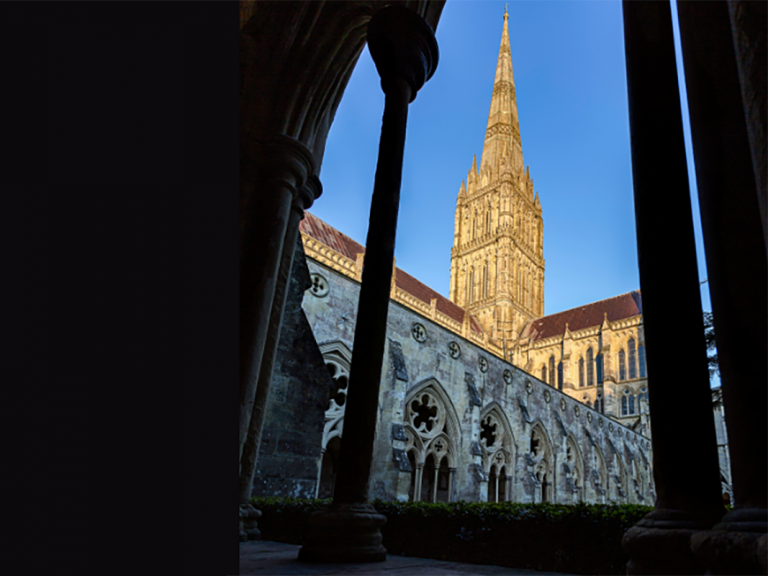We saw last week at the King’s House how excavations can be used successfully to promote archaeology to the general public. Much of this interest resulted from the impact of Channel 4’s successful archaeology series ‘Time Team’, for which Wessex Archaeology undertook post excavation analysis from 2003 until the series was decommissioned in 2013. Irrespective of how archaeology is presented it remains important that any fieldwork can be justified and is supported by considered aims and objectives.
In 2008 Time Team descended on Salisbury Cathedral, principally to investigate the site of the 15th century Chantry Chapel of Bishop Richard Beauchamp, an area that was due to be redeveloped as a burial ground. The project also included work to examine the foundations of the 13th century Bell Tower, north of the Cathedral and to evaluate parts of the Salisbury Cathedral School grounds to the south, which revealed evidence of buildings, possibly part of 18th century stables. The Beauchamp Chapel and the Bell Tower were once major components of the cathedral. They were both demolished between 1789 and 1792 by the architect James Wyatt, in what was described as a phase of work to ‘restore’ the building to its original 13th century form.
Less visually exciting, but just as important, was a separate excavation by Wessex Archaeology that preceded the development of the Plumbery as a cathedral cafeteria in 1999. These two separate projects, Time Team’s and Wessex Archaeology’s, demonstrate two extremes of archaeological research; one exposed to public scrutiny and, in so doing, bringing archaeology to a wider audience through the full glare of television, the other, relatively low-key and unobtrusive but making an equally important addition to the story of the cathedral.


The Beauchamp Chantry Chapel
The Beauchamp Chantry Chapel, which was added to the existing building by Bishop Beauchamp to accommodate his mortal remains, occupied the extreme SE corner of the cathedral. The excavation showed that the chapel was built on an underlying chalk raft foundation, although opinion was divided as to whether this layer had been laid down for the chantry chapel or for the cathedral itself. Possible evidence of a cemetery, established in 1219 and therefore one of the earliest in the new city, was also found. There was no wish to expose and potentially undermine the foundations of the cathedral however the buttresses showed that they had clearly been disturbed by the construction of the medieval chapel.

Four graves were found inside the former building’s footprint including two that contained inhumation burials, one of which was tentatively identified as that of Bishop Beauchamp’s elder brother William. The identity of the second burial could not be established. The two empty graves were confirmed as those of Bishop Beauchamp himself and John Cheney, Beauchamp’s Bailiff, who died in 1499 and whose remains were reinterred with those of Beauchamp, inside the cathedral, when the chapel was demolished.

The Bell Tower
Exposing the east side of the Bell Tower represented the first time that the foundations of this imposing building had been revealed since the demolition, although the footprint of the building can still be seen during times of drought when the outline is clearly visible as a parch-mark in the grass (below).
The remains were dominated by the massive foundations of the Bell Tower, which were over 2m thick with a spiral staircase in the SE corner. The efficiency of the 18th century demolition was impressive; all traces of the ashlar facing had been removed, leaving only the central rubble core. Evidence confirming that the Bell Tower had functioned as an inn was also found.

The trench also contained traces of those people who built the cathedral. Foundation slots of early 13th century workshops or dwellings, erected by the cathedral construction workers, were preserved beneath the foundation layers on which the Bell Tower was constructed.
The Plumbery
The Time Team excavation was not the first work that Wessex Archaeology had been involved with at the cathedral. They had previously been asked to conduct a watching brief when the Plumbery, an open space between the nave and cloister, was converted into a café and visitor centre. This relatively small project recorded, but did not excavate, a series of floor surfaces, wall footings and dumps of workshop waste that included stone working debris and window glass from the construction of the cathedral.


These results, which were repeated subsequently by evidence beneath the Bell Tower, represented a period when the cathedral functioned more as a building site than a place of worship. The process of skilled craftsmanship that created the building persists to the present day in the cathedral workshop, guaranteeing the cathedral’s preservation for future generations.
By Phil Harding, Fieldwork Archaeologist
Can you support our work to share the story of Salisbury with the community? Please consider supporting our new film, Salisbury Uncovered.

